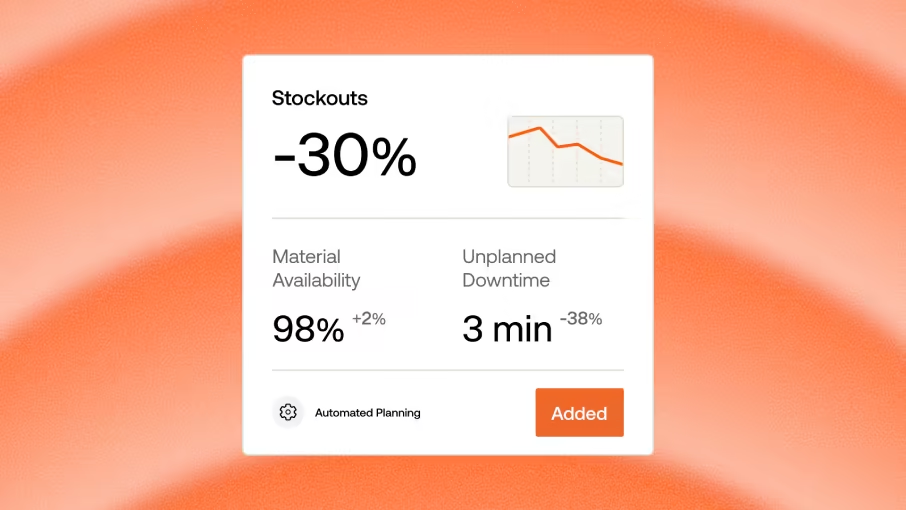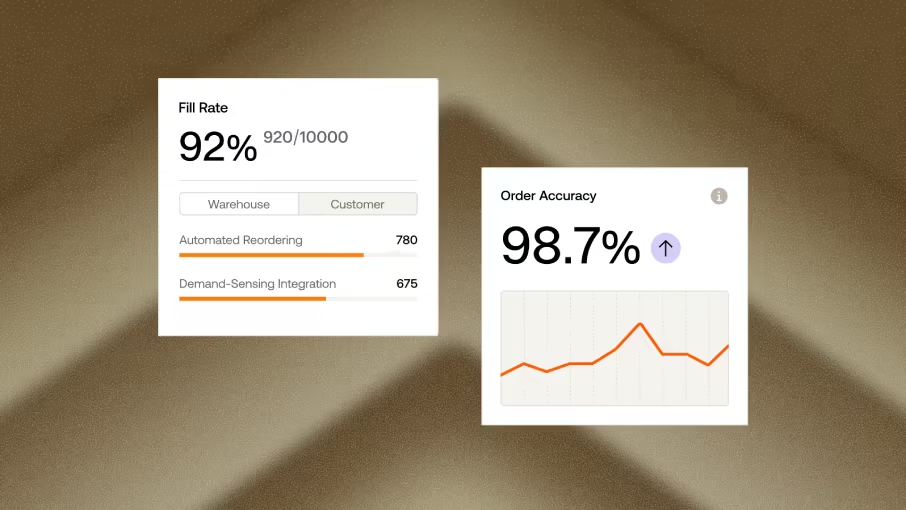

Stability without the spreadsheets.
Reduce delays and confusion by automating updates, confirmations, and delivery tracking — with no need for supplier-side logins.
20
Lower Admin Cost / PO
1k
Supplier Issues Fixed w/o Email
0
Supplier Onboarding Needed
The fastest way to fix what slows you down.
Supplier reliability breaks down when communication lags, confirmation cycles stall, and teams operate in the dark. EPOCH closes those gaps with automated reminders, live delay tracking, and stability metrics.
The real problem.
Late shipments, missed updates, and unclear ETAs force teams into constant recovery mode. Without visibility, even small issues ripple into stockouts, premium freight, and lost production time.
- No early warning when suppliers shift schedules
- Static risk assessments that miss fast‑moving disruptions
- Manual communication loops that slow problem‑solving
- Minor misses lead to major margin loss

How do we solve it?
EPOCH listens to emails, scans, and supplier responses to detect disruptions as they happen — then routes alerts, reminders, and shortage flags to the right people before execution breaks down.
- Track every PO line for confirmation without manual follow-up
- Get instant alerts on late, partial, or missed deliveries
- Automate shortage detection with real-time logic
- Spot unstable delivery patterns and act early

Supplier blind spots grow fast.
Close the loop before they spread.
When supplier updates live in emails, spreadsheets, or siloed portals, teams lose the ability to see, trust, and act on what’s happening. Visibility gaps lead to missed updates, misaligned plans, and cascading rework.
Without EPOCH
- Late or missing order confirmations
- Unclear delivery or shipment status
- Disputes handled through long email chains
Alternative solution
- Requires full supplier onboarding
- Slows updates with forms and portals
- Can’t read email signals or intent
With EPOCH
- Agents extract signals directly from supplier emails
- Shared visibility syncs buyers, suppliers, and logistics
- Alerts and auto-reminders reduce noise and improve response time
Blog
Built to close the visibility gap

Cost Optimisation
Avoid Stockouts and Overstock with Smarter Raw Material Inventory Controls
Avoid costly stockouts and overstocks with smarter raw material inventory controls that improve planning, reduce waste, and boost efficiency.

Supply Chain
Why Proactive Planning Beats Reactive Firefighting in Manufacturing
Proactive planning and supply chain orchestration help manufacturers avoid disruptions, reduce costs, and stay ahead of demand surprises.

Supply Chain
How to Assess the ROI of Supply Chain Visibility Investments
Learn how to assess ROI for supply chain visibility investments, optimize returns, and make smarter, data-driven decisions for long-term success.

Supply Chain
How to Measure Supply Chain Performance with Visibility Metrics
Optimize supply chain performance with visibility metrics. Discover how real-time tracking and predictive insights drive efficiency and customer satisfaction.


Book a demo
Reliable execution starts with better signals.